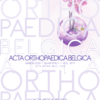Anthropometric three-dimensional computed tomography reconstruction measurements of the acetabulum in children/adolescents
Anthropometric; computed tomography; measurements; acetabulum; children
Published online: May 03 2022
Abstract
The key element for differentiation between normal anatomical variants and pathological deformities is the prior definition of normal ranges for anthropometric parameters of acetabulum according to each age group. Aim of the present study is to analyze the development of the acetabulum in children/adolescents by accurate anthropometric measurements using 3D-CT scans and determine the variations occurring depending on age, gender and/or side.
This retrospective observational study included 85 patients (170 hips) under 15 years of age (0-15) undergoing 1.5mm CT scanning for non-hip related reasons. The measurements were performed by 2 board-certified orthopaedic surgeons. Each year of life represented an age group forming a total of 16 groups. Median number of patients per age group was 12 (range 4-16). The anthropometric parameters included acetabular volume, inclination, version, depth (coronal and axial), width (coronal and axial), Tönnis angle as well as anterior and posterior acetabular sector angles. Mean values, range, standard deviation, p-values, intra- and interrater reliability were calculated.
All measurement values correlated significantly with age. Statistically, there was no side or gender related difference. Rapid growth phases were observed at the age of 11-12. The inter- and intrarater reliability was high (range ICC 0.8-0.99, Cronbach alpha 0.86-0.99, Bland-Altman good agreement).
The present data provides age- and gender-related normative values as well as growth phases describing acetabular morphology. It should help paediatricians as well as paediatric and orthopaedic surgeons as a tool for early diagnosis of deformity and guidance for possible procedures.
